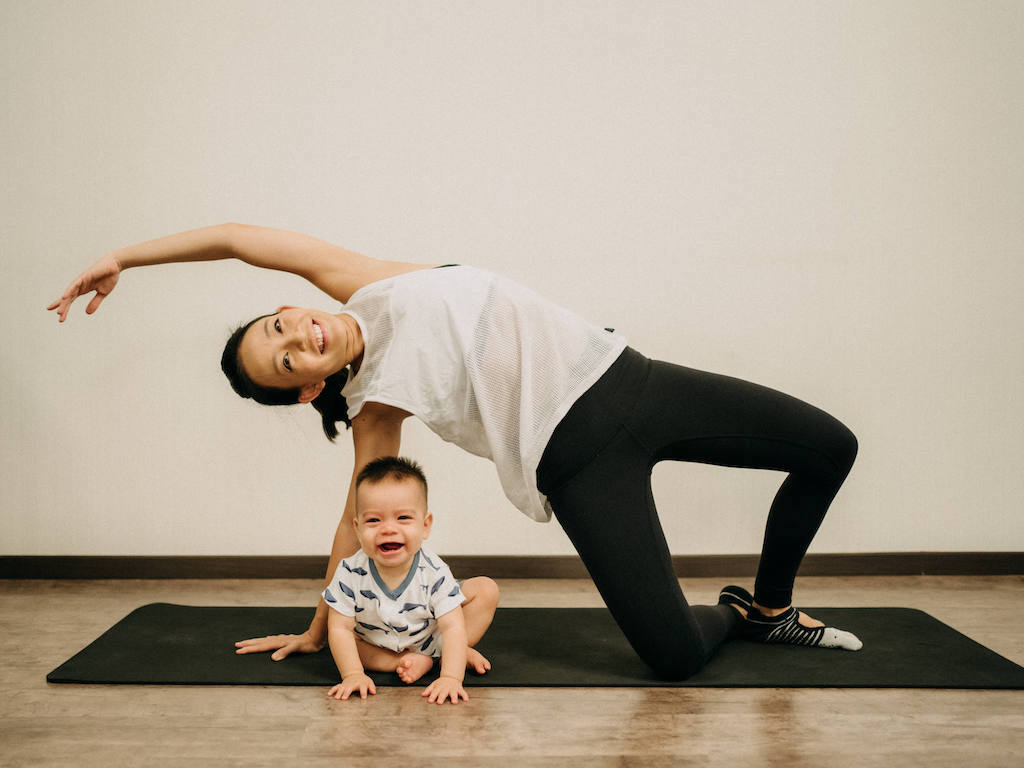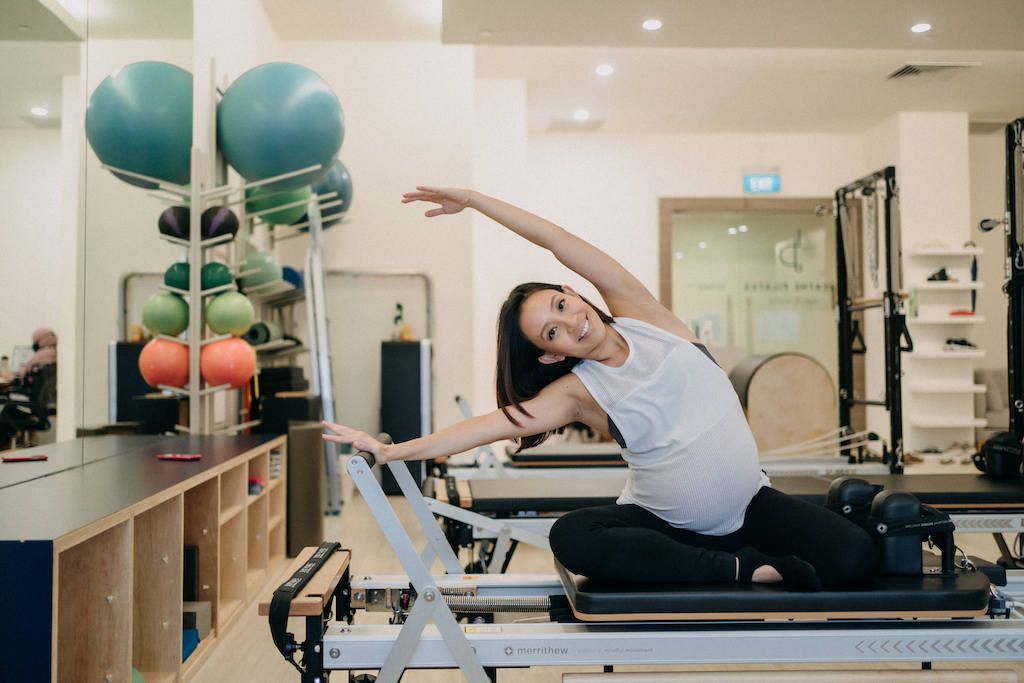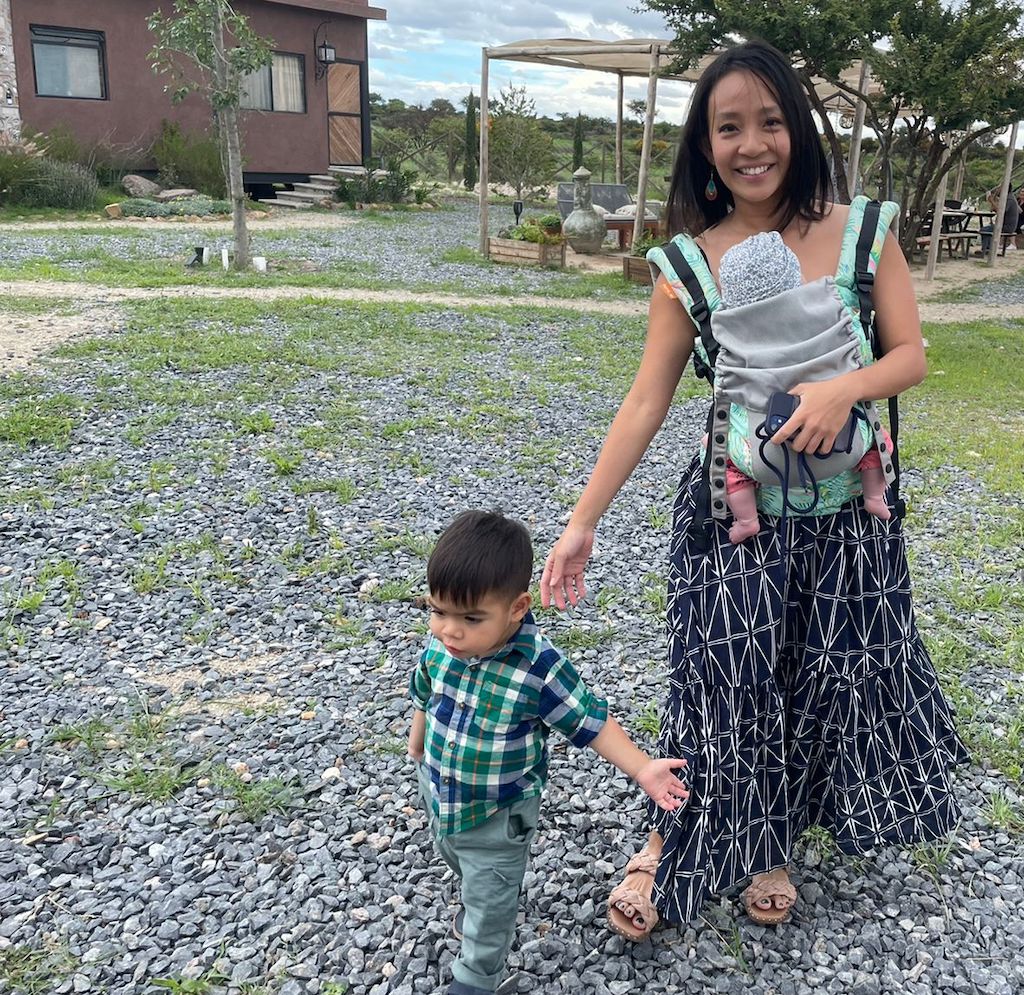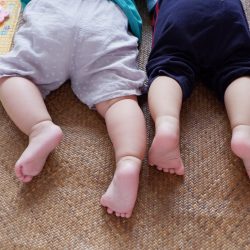SingaporeMotherhood | Lifestyle
April 2023
How Pilates can Help ease your Pregnancy, Labour, & Childbirth experience

Twenty minutes and two pushes. That was all it took for Deborah Wong to birth her two babies: Mark, who is two and a half years old and Isabel, nine months old. In addition, the co-owner and senior instructor at Breathe Pilates did not require pain management for either birth. Neither did she require an episiotomy, nor develop diastasis recti. Deborah, 35, credits all this to Pilates, which she practised and taught throughout both pregnancies.
“With my first it was during the COVID-19 pandemic and our studios were closed, so I did workouts at home. With my second pregnancy I went into the studio to practise on equipment such as the reformer, cadillac, and chair. I also did gentle Pilates exercises throughout labour, such as lunges, squats, pelvic circles on the ball, cat cow, and breath work. These really helped with pain management and labour progress.”
While Pilates is known to be a good workout for everyone, it is especially excellent for mums-to-be and new mums because it is “customisable and intelligent,” says Deborah, who is also a fully licensed medical doctor.
“Pilates can meet you wherever you are, whether you are a beginner, or an athlete who wants to maintain your fitness level. The focus is on the pelvic floor, diaphragm and abdominal muscles, which are where we need the most help with during pregnancy and postpartum.”
Deborah Wong, director and senior instructor, Breathe Pilates
How much Pilates did you do when you were pregnant?
In the first trimester my energy levels were very low, so I just did some gentle movement and stretches to get the body moving. As my energy levels improved in the second and third trimesters I increased the intensity of the exercises to focus more on strengthening. I would do Pilates and Gyrotonic two to three times a week. I was also teaching Pilates during my pregnancy, all the way to the fortieth week!

How about getting back in shape after giving birth?
I do weight training twice a week, and Pilates twice a week. I don’t think of postpartum as ‘getting back’, but more like moving forward. You are never getting your old body back (in a sense) because it has changed! You had a baby, grew it for nine months and then delivered it, and if you breastfed, nourished the baby after!
So I did not pressure myself about getting back in shape, but just started working out based on how I felt and what my body needed. I am still 5kg heavier than before my first pregnancy, but I am a lot stronger now.
(See also: 5 easy Pilates exercises to Stay in Shape during Pregnancy and after Giving Birth)
How does Pilates help a body?
People think about Pilates as a ‘core’ exercise, but it is so much more than that. It teaches you how to move your body well and efficiently. Our bodies are designed to move in a biomechanically efficient way and you can see that in babies and toddlers, who move gracefully with agility and flexibility.
However, our lifestyle encourages dysfunctional movement patterns, with most children developing that from as young as age five (the same age they start ‘real school’ because of all the sitting instead of moving around).
Pilates helps to restore healthy movement patterns, which help to prevent and rehabilitate injuries, and improve mobility, flexibility, agility, and strength. It helps us reconnect our neurological system and our muscular system, creating a mind-body connection and integrating the person as a whole.

Which is more important to do, prenatal or postnatal Pilates?
I would say both. I think of it as a “V” — you start with your base level of exercise, and then make modifications based on your changing body working to the bottom of the V, which is delivery and labour. After that, you start with the same exercises you did just before you gave birth and work your way back up the V to the same type of exercises you did pre-pregnancy.
(See also: Hospital Maternity Package options in Singapore for Pregnant mums-to-be)
If you could only do one Pilates exercise forever, which would it be?
Breathing exercises! One of the most basic principles of Pilates involves our breath. So many dysfunctions happen simply because we don’t breathe properly. Dysfunctional breathing can cause stress, back pain, neck pain, shoulder pain, pelvic floor dysfunction, urinary incontinence and more. Given that we breathe thousands of times a day, it is very important!

Can I just follow those Pilates moves on Tik Tok?
Form is everything! If you understand the principles of Pilates and the muscles that are supposed to be working, then yes. However, we have seen far too many people perform exercises incorrectly, resulting in injury. Like squats! Such a great, simple exercise, but there is so much to unpack. If you do it wrongly, you end up with knee and back pain.
What advice would you give to mums-to-be and new mums who are thinking of starting Pilates?
Find a good instructor. A good foundation is essential, and its importance cannot be overstated. A lot of people think of the postpartum period as the immediate period after delivery, but we have seen mums who have not done postpartum work after delivery and, two years later, still have the same conditions and problems you would find in an immediate postpartum mother.
All images: Courtesy of Deborah Wong and Breathe Pilates
See also: How Much Does Confinement in Singapore 2022/2023 Cost?)
All content from this article, including images, cannot be reproduced without credits or written permission from SingaporeMotherhood.
Follow us on Facebook, Instagram, and Telegram for the latest article and promotion updates.





